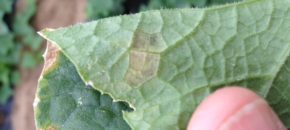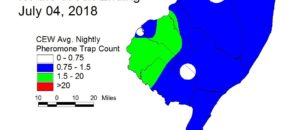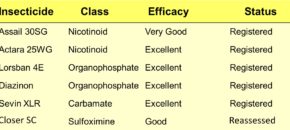
Sweet Corn European corn borer (ECB) moth catches in black light traps continue to be very low. There will be no map in this edition due to insufficient catch. There have been isolated incidents of new feeding in the far south of the state, but generally, the threat to corn should be low until the second flight begins in […]
Continue reading...

